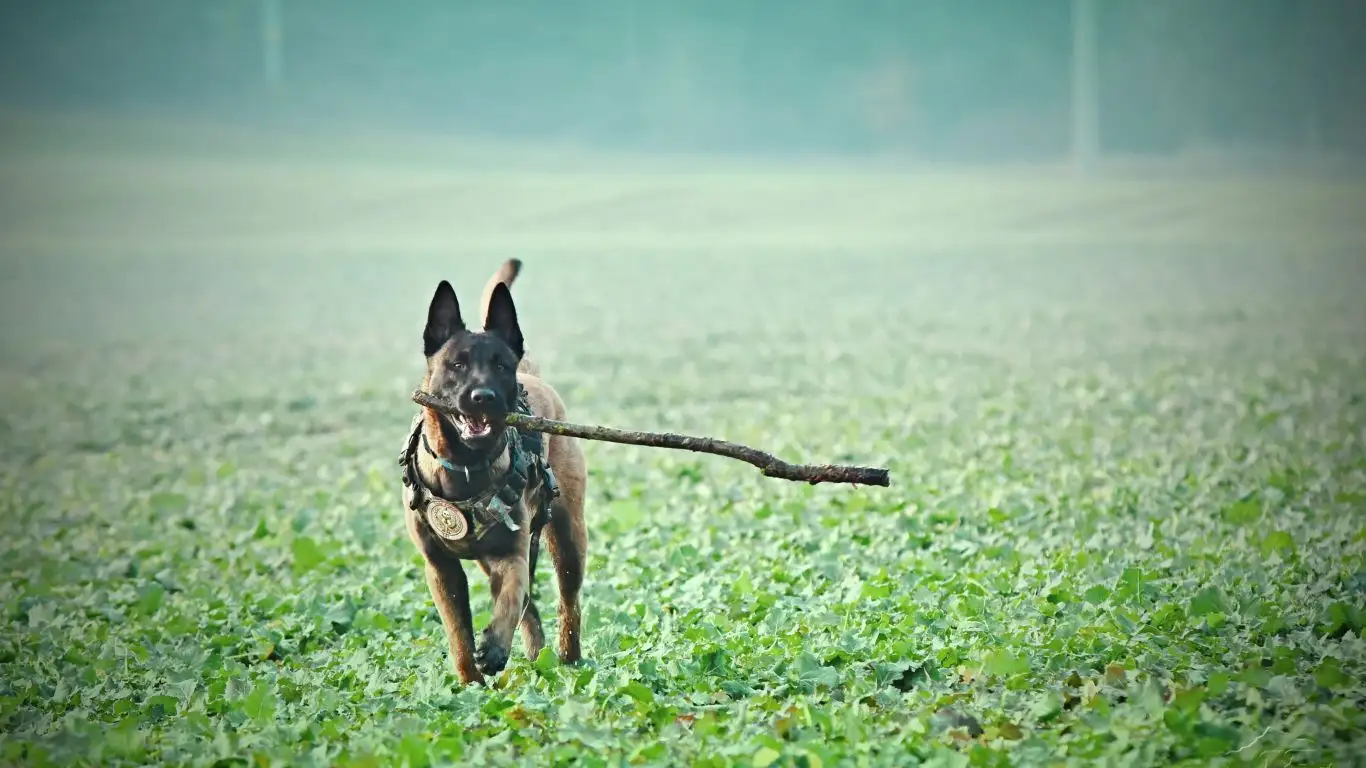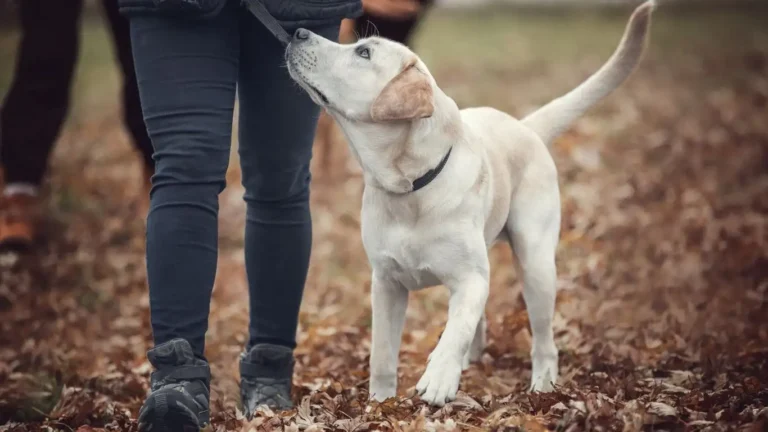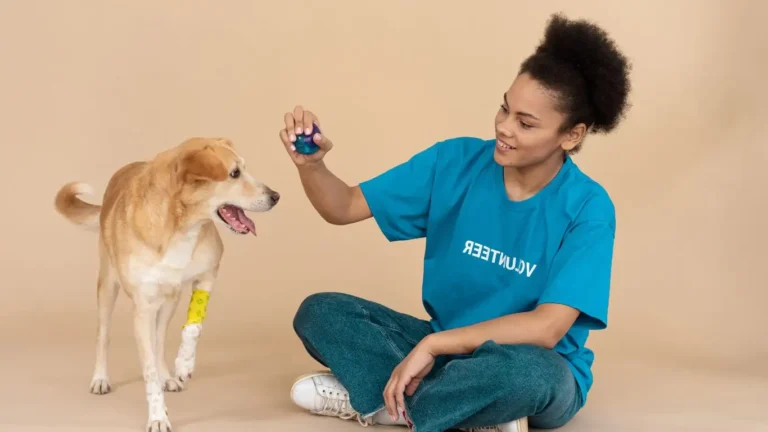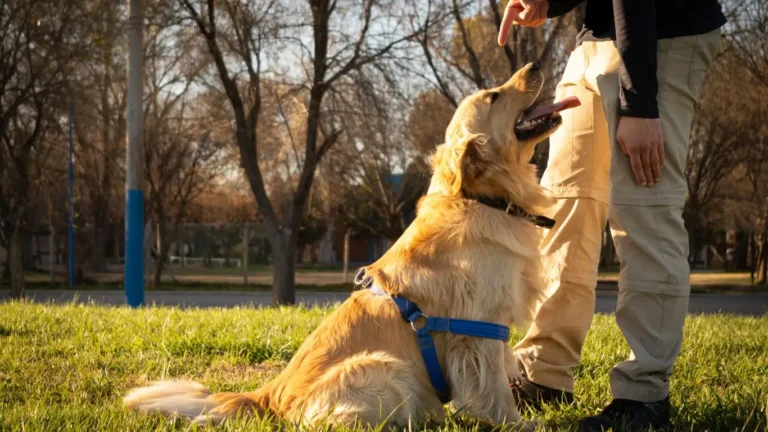How to Train a Dog to Stop Running Out the Door: Effective Tips for Control and Safety
As a Canine-Assisted Therapy Trainer, I’ve seen firsthand the challenges dog owners face when their furry companions dart out the door. If you’re struggling with this common issue, you’re not alone! Teaching your dog to stop running out the door can be a tricky but incredibly rewarding task. Whether you’re dealing with a mischievous puppy or an adult dog who has developed a bad habit, there are effective methods you can use to keep your dog safe and prevent these door dashes. In this post, we’ll walk through several tried-and-true training techniques that I’ve used in my career to solve this problem. Let’s dive into the world of positive reinforcement, consistent routines, and creative problem-solving that will make this behavior a thing of the past.
Understanding the Root Cause: Why Do Dogs Run Out the Door?
Before we dive into training strategies, it’s important to understand why dogs run out the door in the first place. Dogs aren’t doing this to annoy you, although it may certainly feel that way! Their behavior is usually driven by excitement, curiosity, or even the desire to explore. When a door opens, they see an opportunity to get outside, and many dogs, especially young ones, simply cannot resist the temptation. Some dogs might associate the door with positive experiences, like going for a walk or a car ride, which makes them eager to bolt the moment they get a chance.
Other times, the behavior could stem from anxiety or lack of impulse control. If your dog is a bit more anxious or excitable, the door might trigger a sense of urgency. So, understanding your dog’s personality is key. The goal here is not just to stop your dog from running out the door but to help them control their impulses and learn that there are better, safer alternatives.
Creating a Safe and Controlled Environment
One of the first steps in preventing your dog from running out the door is to set up a controlled environment. This might seem obvious, but it’s crucial. A chaotic entryway can make it difficult to maintain control over your dog. A well-organized space gives both you and your dog the best chance at success. Here are a few tips that can help:
- Use baby gates: If possible, set up a baby gate near the door to prevent your dog from rushing to it every time it opens. This can be especially useful for younger dogs or puppies who have yet to learn impulse control.
- Remove distractions: When you’re training, try to minimize distractions near the door. If you have other pets or children running around, it can be hard for your dog to focus on the task at hand.
- Establish boundaries: You can train your dog to stay behind a designated line or boundary in the house. This gives them a clear understanding of where they’re allowed to be and where they’re not.
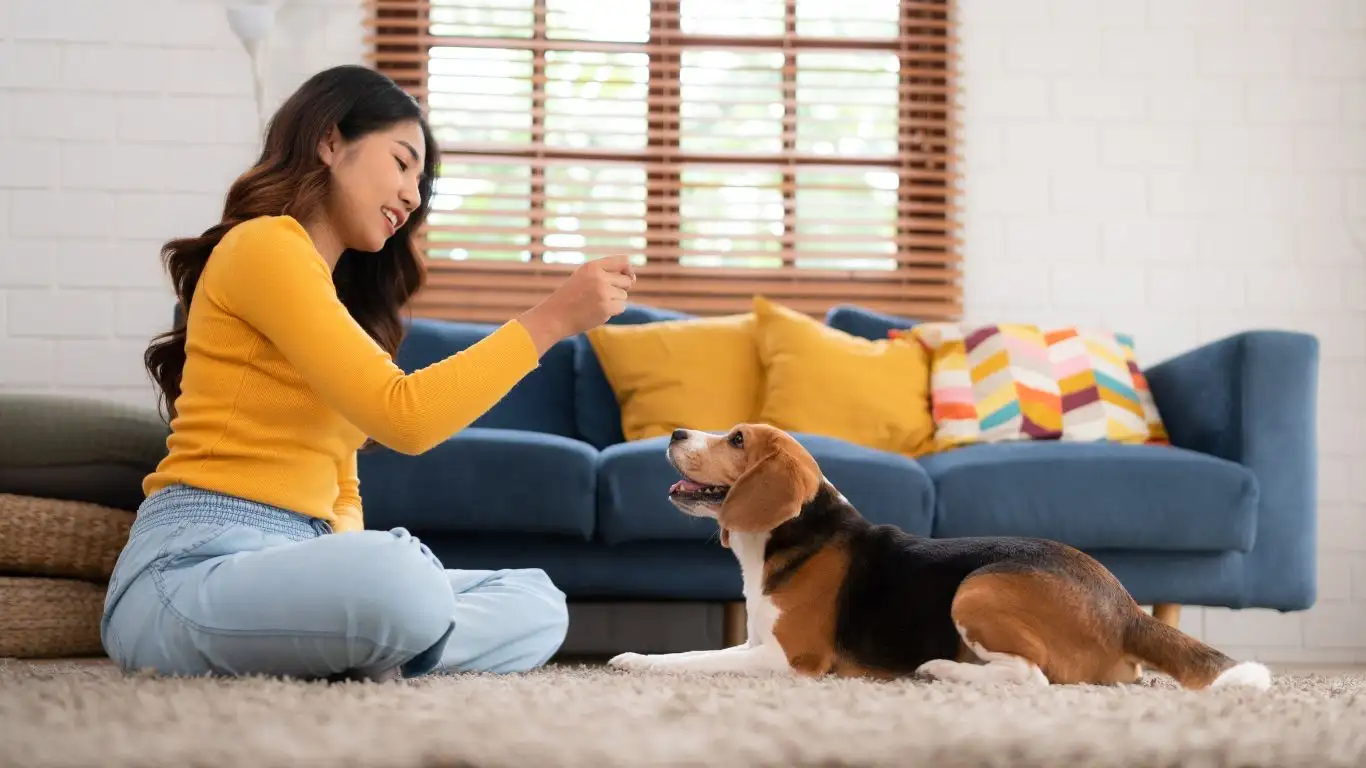
Teaching Basic Commands: “Sit” and “Stay” Are Your Best Friends
Now that we’ve set up a controlled environment, it’s time to move on to training techniques. One of the most effective methods for teaching your dog not to run out the door is by using basic obedience commands. “Sit” and “Stay” are two of the most valuable commands in any dog’s training routine, and they work wonders in this scenario.
Here’s how I like to approach it:
- Start with “Sit”: Have your dog sit near the door and reward them for staying put. This teaches them that being calm near the door leads to positive rewards.
- Introduce “Stay”: Once your dog has mastered the “Sit” command, start incorporating “Stay.” With practice, they’ll learn that staying in one spot, even when the door is open, is the right behavior.
- Gradual Progression: The next step is to slowly open the door while your dog is sitting and staying. If they move, calmly close the door and try again. Reward them for staying put, even when the door is wide open.
Consistency is key here. I recommend practicing this with short sessions at first and gradually increasing the time the door remains open. With patience and repetition, your dog will understand that staying by the door is much more rewarding than bolting out of it.
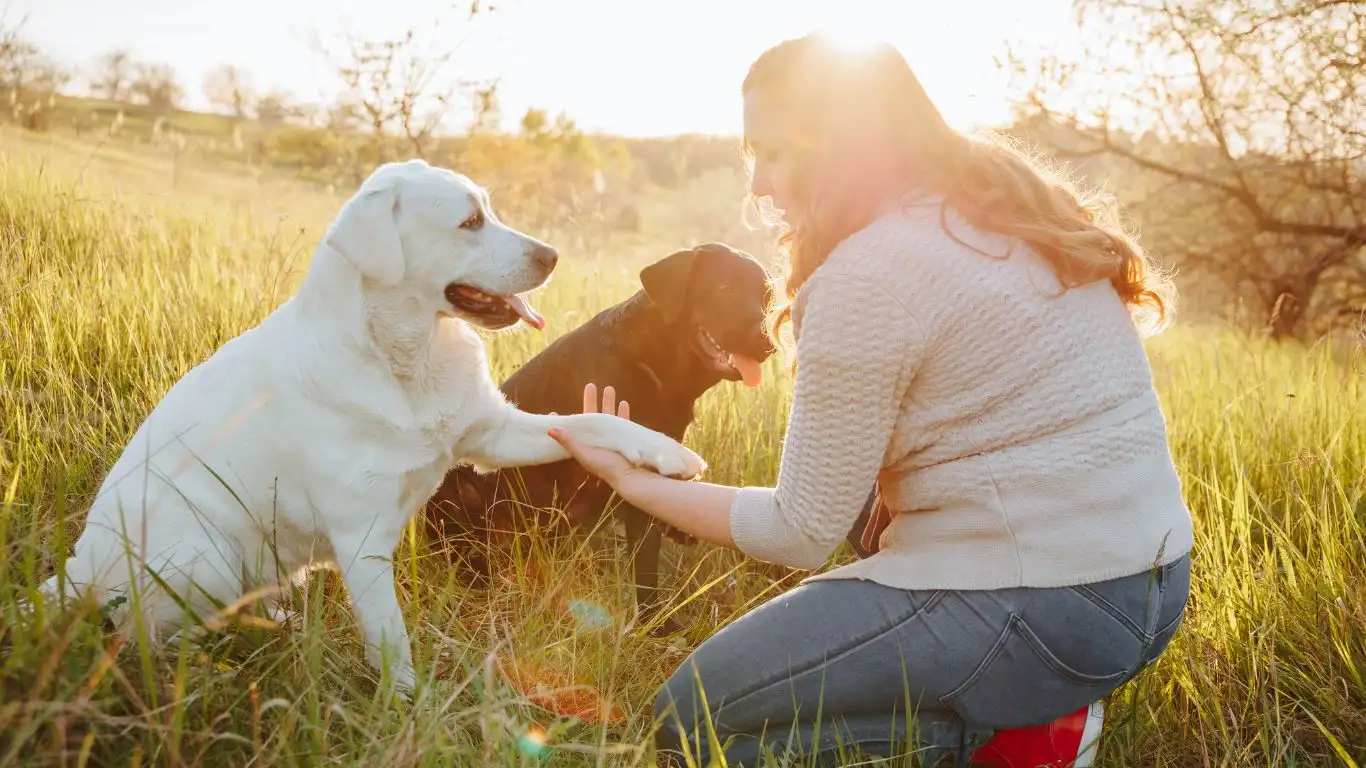
Using Positive Reinforcement to Strengthen the Behavior
One of the most powerful tools in dog training is positive reinforcement. Rewarding your dog for good behavior helps reinforce the idea that staying at the door or waiting for permission to go outside is what you want them to do. Over time, this will become second nature for them. Here’s how you can use positive reinforcement effectively:
- Use high-value treats: Make sure you’re using treats your dog really loves. The more enticing the reward, the more motivated they’ll be to stay in place.
- Be consistent with praise: Along with treats, always offer verbal praise and affection when your dog follows the commands. This helps them understand that staying is the behavior you’re encouraging.
- Start small: Don’t expect your dog to hold a “Stay” for long periods right away. Start with just a few seconds and work your way up.
Remember, patience is key. Some dogs pick up on commands quickly, while others may take a little longer. Be patient and stay consistent with your rewards, and your dog will soon learn to respect the boundaries you’ve set.
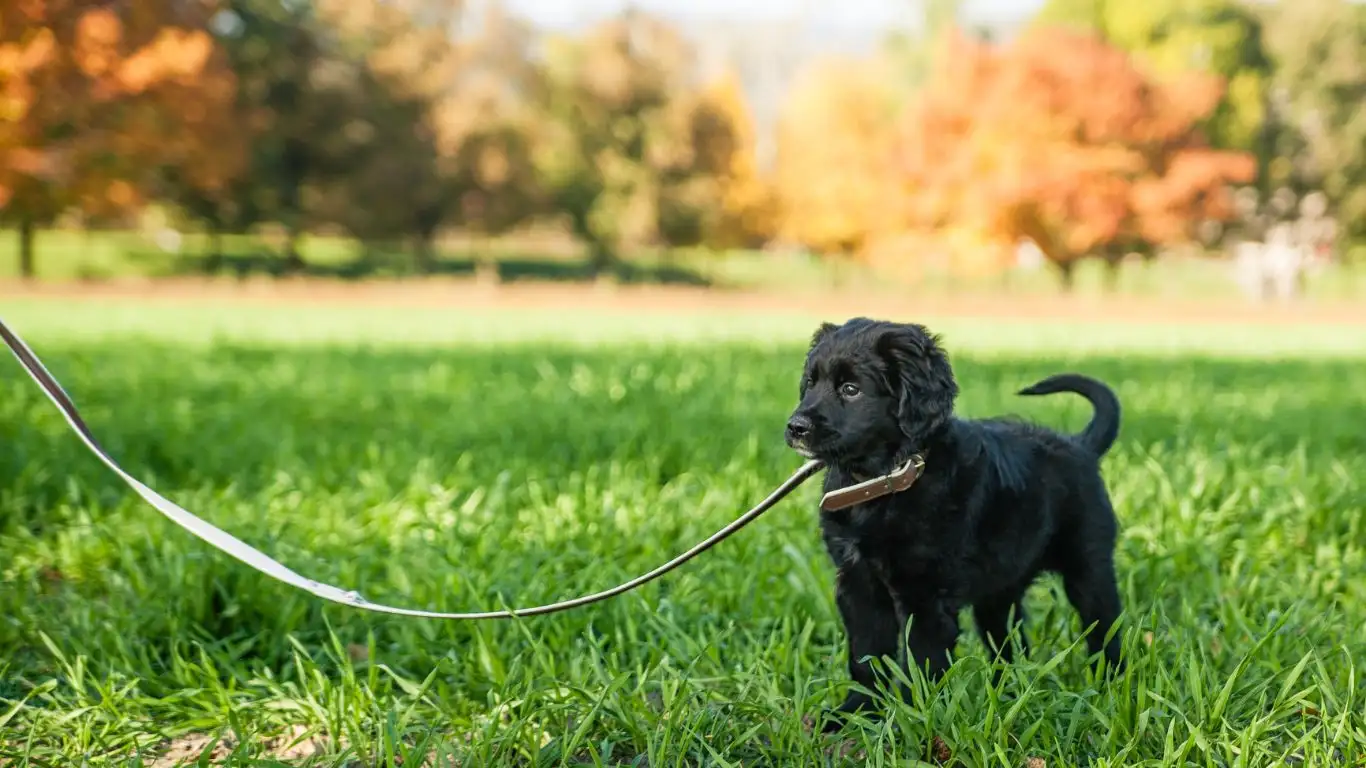
Setting Realistic Expectations
Before we wrap up this section, it’s important to set realistic expectations. Training your dog to stop running out the door is a process, not a quick fix. It requires consistent effort, positive reinforcement, and patience. Every dog is different, and some may take longer to learn the new behavior. If you’re feeling frustrated, don’t give up! Consider reaching out to a professional trainer if you’re struggling to see progress. With time, persistence, and love, you’ll get there!
Introducing Door Games to Improve Control and Impulse Control
If your dog is still struggling with running out the door despite your best efforts with basic commands, don’t worry—there are still plenty of other strategies you can try. One of the most effective ways I’ve found to teach impulse control around doorways is through door games. These games are a fun and interactive way to help your dog learn self-control while simultaneously building a stronger bond between you and your dog. Here’s how I like to approach door games:
The “Door Open, Door Closed” Game
This game is incredibly simple but highly effective. The idea is to teach your dog that the door opening and closing is not an invitation to rush out. It may seem counterintuitive, but the goal is to actually open the door but not allow them to go outside. Here’s how to play:
- Step 1: Start with your dog sitting behind you, either on a leash or in a confined area. You don’t want them to be able to dart away from you at this stage.
- Step 2: Open the door just a little bit and immediately close it again. If your dog doesn’t move, praise them for staying calm. You can give them a treat for keeping their cool.
- Step 3: Gradually increase the door opening while still rewarding calm behavior. If your dog tries to bolt, close the door right away, and calmly reset the situation.
- Step 4: After a few repetitions, start increasing the amount of time you leave the door open. Again, you only reward calm behavior—if your dog rushes the door, simply close it and start over.
This game reinforces the idea that the door opening doesn’t necessarily mean it’s time to go outside. With enough practice, your dog will learn that rushing to the door won’t get them what they want and that waiting patiently is the key to a successful outcome.

Managing Excitement and Preventing Door Dash Behavior
Another reason many dogs bolt through the door is simply because they get so excited by the idea of going outside. This can especially be true for dogs that love walks, car rides, or playtime. The moment they see the door open, their excitement takes over, and before you know it, they’re running straight through it!
The key here is to manage their excitement before you even approach the door. If you can keep your dog calm when you’re getting ready to open the door, you’re much more likely to have a successful training session. Here are some tips that have worked for me:
Calmly Approach the Door
Before you even think about opening the door, make sure your dog is calm and not jumping around in excitement. You can train them to associate calmness with a reward by using the “Sit” or “Stay” command right before you approach the door.
- Wait for calmness: Before opening the door, ask your dog to sit and wait calmly. Only open the door when they’ve settled down and are in a calm state.
- Reward calm behavior: Reward your dog for remaining calm before and during the door-opening process. This reinforces the idea that calmness leads to good things!
- Ignore unwanted behavior: If your dog starts jumping or acting excited, simply ignore them. Don’t give them attention or open the door until they’ve calmed down.
By taking the time to ensure your dog is calm, you’ll be able to avoid that chaotic burst of energy the second the door opens. Patience is critical here, but with enough practice, your dog will learn to wait calmly every time the door opens.
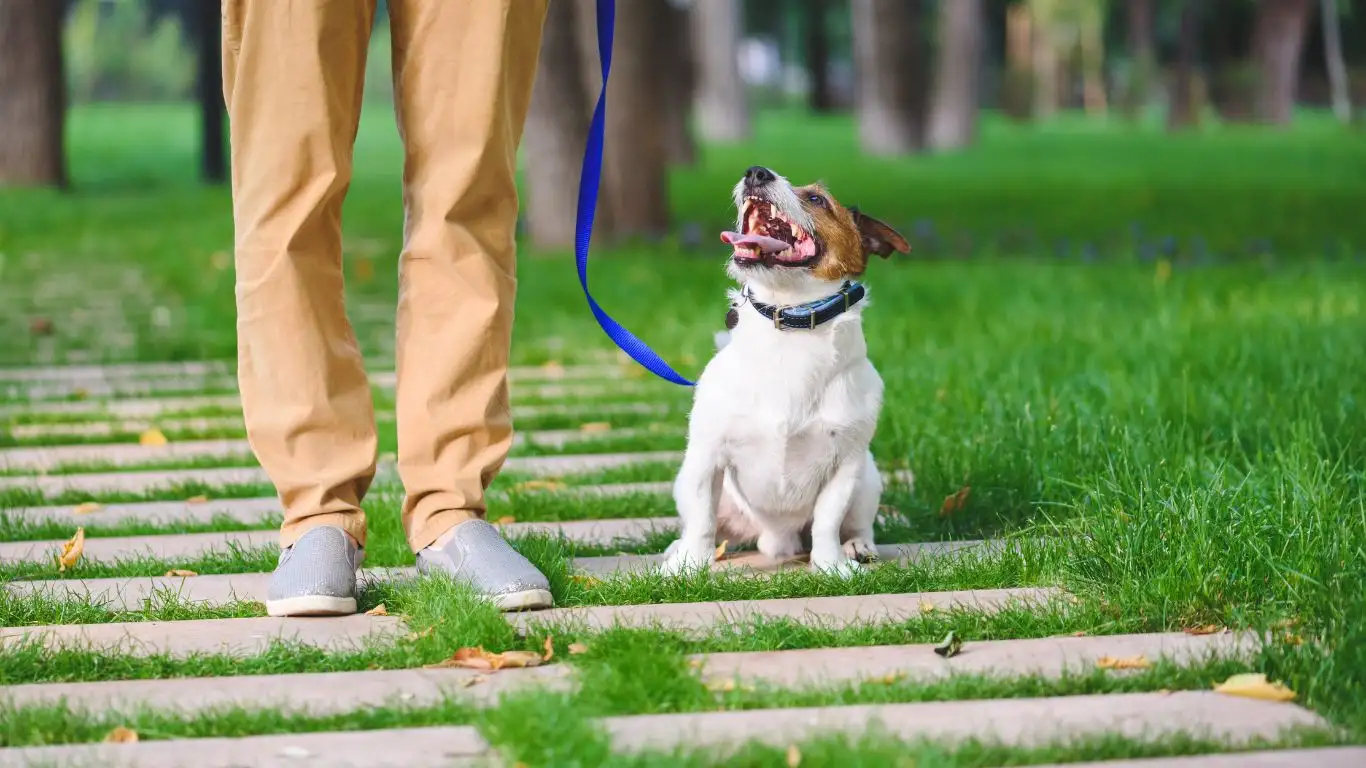
Redirecting Your Dog’s Attention with Toys and Distractions
Sometimes, dogs get fixated on the door because they simply don’t have anything else to focus on. The door represents an exciting, possibly rewarding opportunity for them, but if you can redirect that focus, you might just solve the problem. One great way to do this is through the use of toys or engaging distractions. I’ve used this strategy many times with my clients who have high-energy dogs.
Interactive Toys and Puzzles
Using toys that keep your dog engaged can be a game-changer. If your dog has a tendency to bolt every time the door opens, try keeping them occupied with an interactive toy or puzzle while you prepare to leave. This is especially useful for dogs who are motivated by food or treats.
- Food-dispensing toys: Toys like Kongs or treat-dispensing balls can keep your dog engaged for a long period of time. While they’re focused on getting the treat out, they won’t be as inclined to focus on the door.
- Engaging puzzles: Puzzle toys that require your dog to think and problem-solve are great for keeping their mind off the door. This can be a particularly effective solution if you have a dog who is highly driven by stimulation.
- Chew toys: Providing a chew toy right before you open the door can help shift their attention from the door to something more satisfying.
When your dog is focused on something other than the door, they’re less likely to run toward it as soon as it opens. Plus, giving them something to do can help reduce any pent-up energy they may have, making them more likely to follow your commands when you’re ready to leave.

Using Leashes and Long Lines for Safety and Control
While you work on training your dog to stop running out the door, it’s important to ensure their safety. Even if your dog seems to have mastered the commands, there will be times when you need an added layer of control—especially during the initial stages of training. This is where using a leash or long line can be extremely helpful. I’ve had many dog owners tell me that the leash has been a lifesaver during these training sessions.
How to Use Leashes and Long Lines Effectively
- Attach a leash indoors: Keeping your dog on a leash inside, particularly when you’re near the door, ensures you have control over their movements. If they try to rush, you can gently guide them back into place without the risk of them running out.
- Use a long line outdoors: If you’re training outdoors and want to give your dog more freedom, a long line allows them some space while still giving you control. It’s especially useful when working in larger spaces.
- Reinforce commands with the leash: If your dog starts to move before you give the release command, gently tug the leash to reinforce the “Stay” or “Sit” command. This helps them associate the behavior with a clear consequence.
Leashes and long lines provide a sense of security while you’re teaching your dog to manage their excitement and impulses. Plus, they give you peace of mind knowing that your dog won’t take off unexpectedly, especially in busy or dangerous areas.
Building Consistency with Your Training Routine
By now, you’ve probably realized that training your dog not to run out the door isn’t a one-and-done task. It’s all about building consistency and sticking with the process. As with any behavior modification, consistency is the key to success. In my experience as a Canine-Assisted Therapy Trainer, I’ve seen many dogs successfully learn to control their impulses, but only when their owners stay patient and consistent. Let’s dive into why consistency is so important and how you can apply it to your training.
Consistency in Timing and Rewards
Consistency in your training isn’t just about repeating the same actions over and over; it’s also about consistency in timing and rewards. When you reward your dog for good behavior, the timing has to be spot-on. For example, if your dog sits calmly when the door opens, reward them within a second or two so they understand exactly which behavior earned the reward. This helps them link the good behavior with the reward, which is essential for effective training.
- Immediate rewards: Make sure to reward your dog immediately when they display the desired behavior. If you wait too long, they might not connect the reward to the action.
- Keep rewards varied: While treats are effective, don’t always rely on them. Mix things up by offering praise, affection, or even a favorite toy. This keeps your dog engaged and motivated to repeat the good behavior.
- Repeat regularly: Consistency also means practicing the same commands and expectations every time you approach the door. This helps reinforce the behavior you want to see.
When training, think of it like building a routine. If your dog knows exactly what’s expected every time they see the door, they will quickly catch on. It may take time, but with consistent practice, your dog will learn to stay calm and follow the rules you’ve set for them.
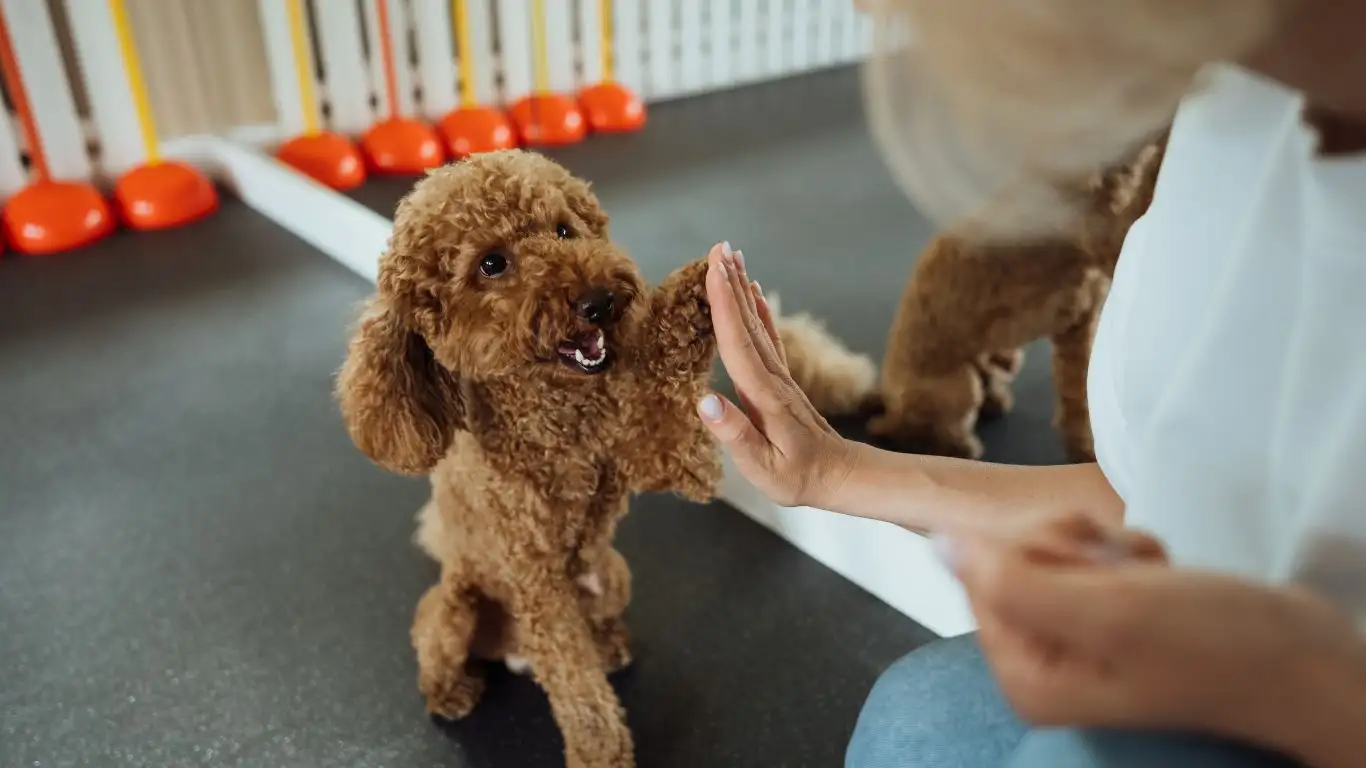
Managing Setbacks: What to Do When Training Feels Like It’s Not Working
No matter how hard you try, there will be times when things don’t go as planned. Your dog might slip up and bolt out the door again, or they might seem to forget their training. I’ve seen it happen to many dog owners, and it can be frustrating. But here’s the thing: setbacks are a normal part of the training process. The important thing is to stay calm and reassess your approach. I’ve personally learned that flexibility and patience are just as important as consistency. So, what can you do when things aren’t progressing as smoothly as you’d like?
Don’t Punish Your Dog
One of the biggest mistakes dog owners make when dealing with setbacks is punishing their dog. Punishment often backfires and can lead to fear or anxiety, which could make the problem worse. Instead of punishing your dog for running out the door, focus on reinforcing positive behaviors and redirecting their attention when necessary.
- Redirect to a positive behavior: If your dog makes a dash for the door, calmly redirect them to a positive behavior like sitting or lying down before trying again.
- Take a break: If you’re feeling frustrated, it’s okay to take a break from training. Sometimes, stepping away for a moment gives both you and your dog the time you need to reset and come back to training with a fresh mindset.
- Gradual training: If your dog is struggling, consider breaking down the training into smaller, easier steps. Gradually increase the difficulty once they’ve mastered the basics.
Setbacks don’t mean your dog isn’t making progress; they simply mean that there’s an area where additional practice or adjustments are needed. By being patient and flexible with your approach, you’ll set your dog up for success in the long run.
Reassess the Environment
Another thing to consider when facing setbacks is your environment. Sometimes, dogs bolt because they’re responding to external distractions—such as other pets, noises, or even the temptation of a nearby park. Make sure your training space is quiet and free from distractions. If your dog seems to be overly distracted by something, it might help to remove that trigger during training sessions.
In some cases, you may even want to reassess your initial training setup. Perhaps your dog is having trouble following the commands in high-energy situations, such as when you’re about to go for a walk. In those cases, try to lower the intensity by starting with shorter training sessions or practicing commands in a calmer setting before progressing to the more exciting scenarios.
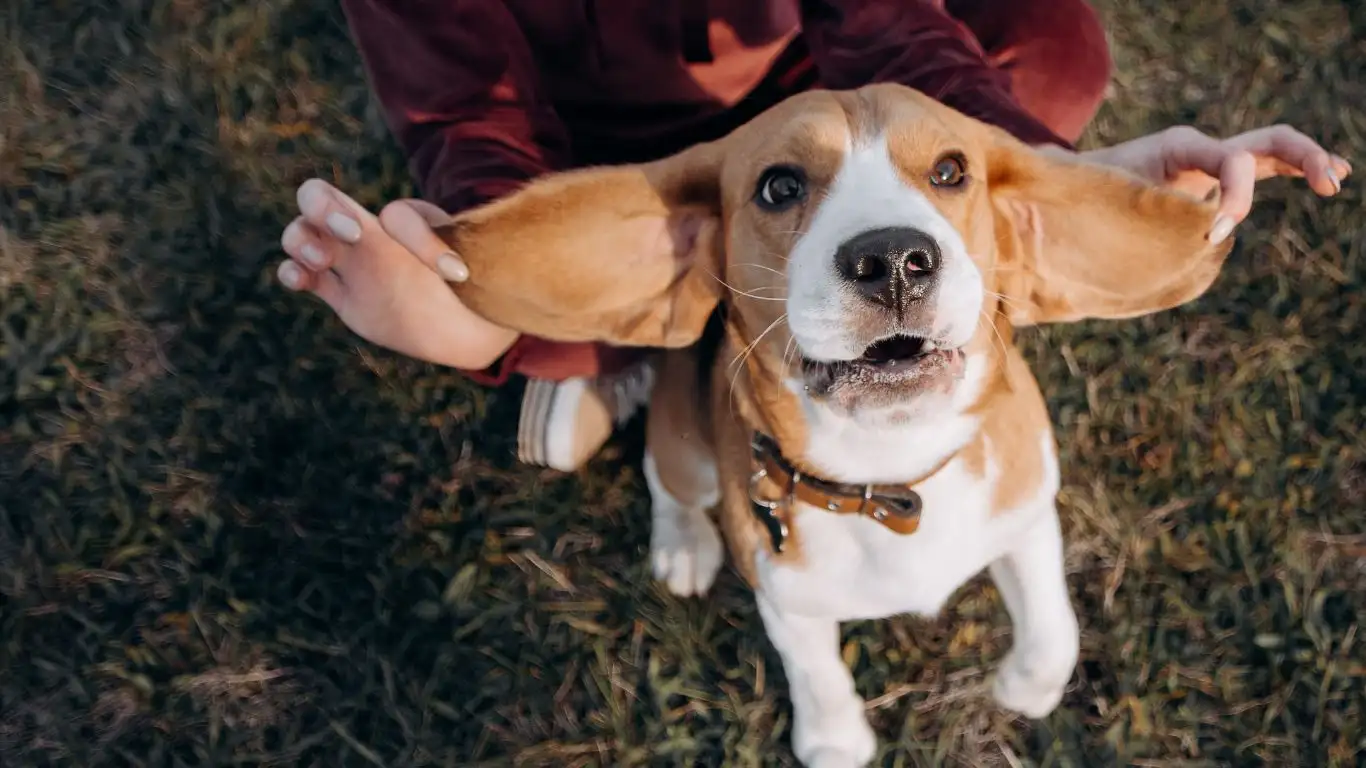
Incorporating Professional Help When Necessary
If you’ve been training your dog for a while and you still can’t seem to make any headway, don’t be afraid to seek professional help. Sometimes, having a professional trainer can make all the difference in resolving a stubborn behavior. A trainer can give you personalized advice and strategies that are tailored to your dog’s personality and needs.
When Should You Seek Professional Help?
If your dog continues to run out the door despite all your efforts and seems to be getting worse instead of better, it may be time to call in a professional. Trainers have years of experience dealing with behavioral issues like this, and they can quickly identify what’s going wrong in your approach and offer solutions. They may also help you strengthen your bond with your dog, which can be a huge factor in successful training.
- When training feels overwhelming: If you’re feeling stuck or overwhelmed by the situation, a professional trainer can help you break the problem down into manageable steps.
- When your dog shows signs of anxiety or aggression: If your dog’s behavior around the door is causing them significant stress or anxiety, a trainer can help you address those issues in a way that’s gentle and effective.
- When progress stalls: If you’re not seeing the results you expect after several weeks of consistent training, it might be time to seek an expert’s advice.
Remember, there’s no shame in asking for help. In fact, bringing in a professional can help save time and frustration and lead to faster success in training your dog. Every dog is different, and what works for one may not work for another. A trainer can help you find the perfect solution that works for you and your dog.
References
Disclaimer
The content provided in this article is based on personal experience and general knowledge of canine behavior. While every effort has been made to ensure the accuracy of the information, individual results may vary depending on your dog’s specific needs and personality. For more specialized advice, consider consulting a professional dog trainer or veterinarian.
